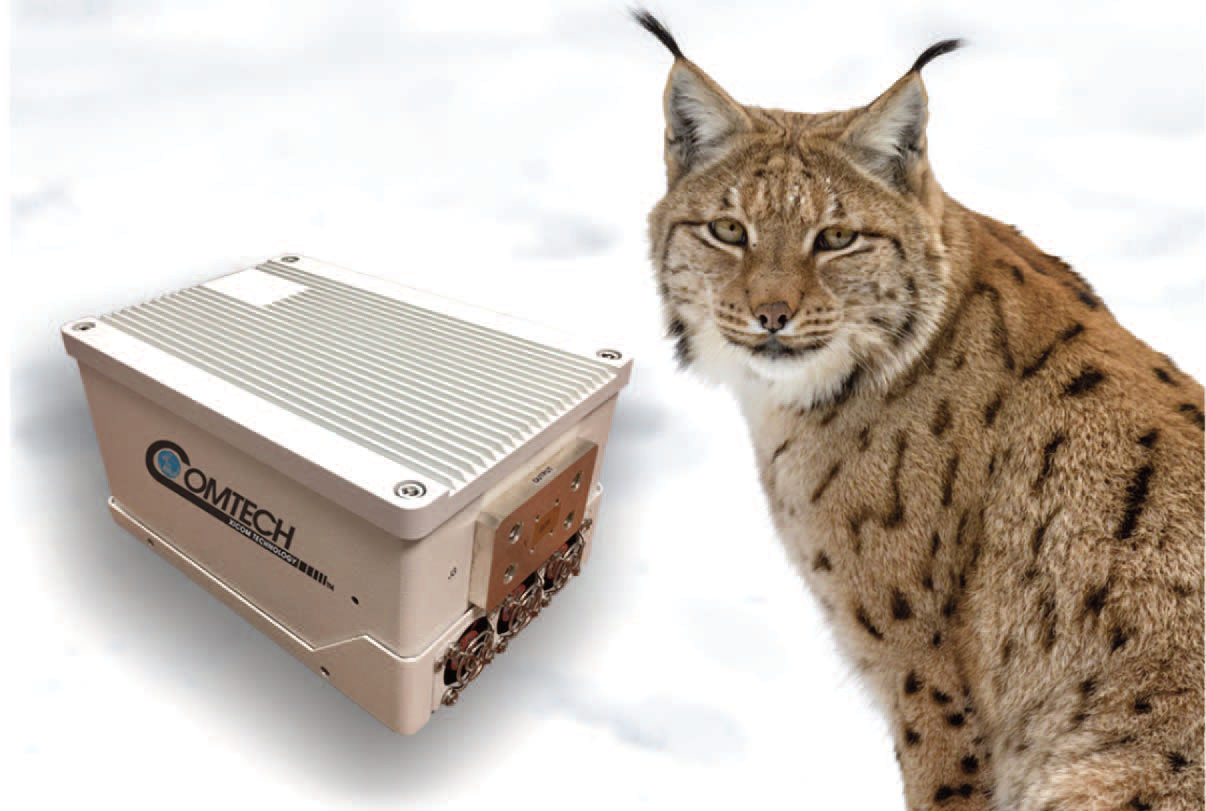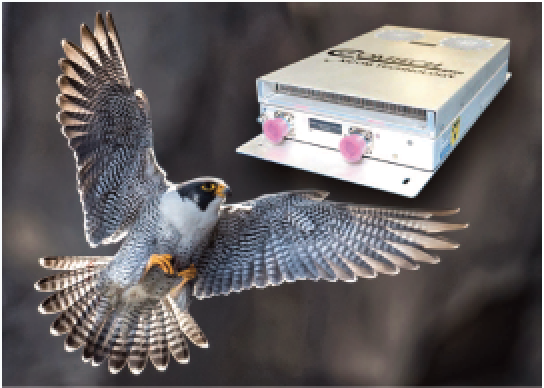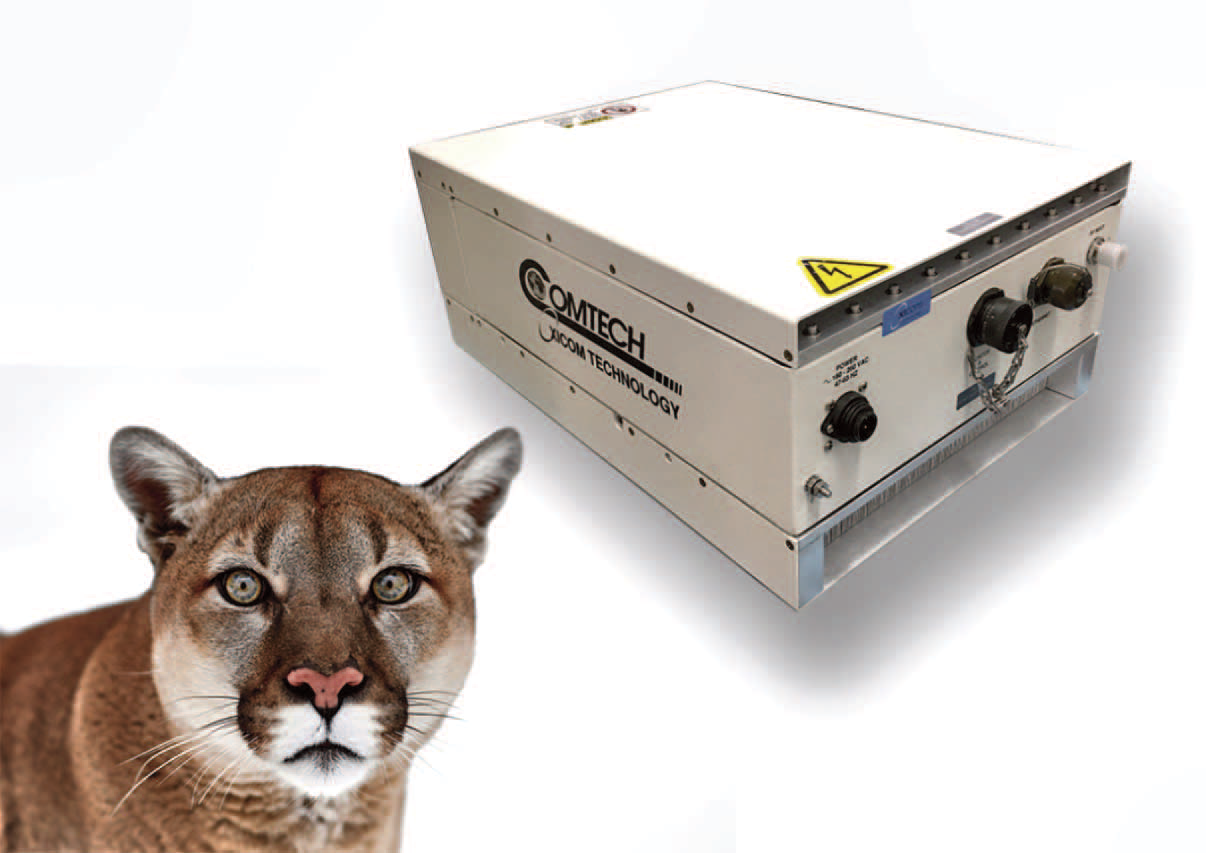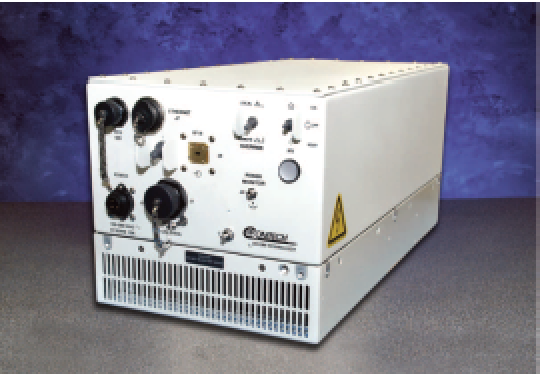Despite the COVID-19 Pandemic and all of the changes that it has brought, Comtech Xicom Technology saw a 30 percent increase in orders driven by new and existing military programs.

2020 was a year of challenges and milestones at Comtech Xicom Technology, Inc. The company started the year with a major development contract for a military airborne solid-state power amplifier (SSPA) and ended with an enormous development contract for a new military Q-band traveling wave tube (TWT) power amplifier
Between those two goalposts was a year like no other. In March, Xicom announced a slate of new products aimed at commercial and military SATCOM terminals and looked forward to a big year of opportunities. The new product announcement came days before state and county governments began ordering shutdowns.
Xicom is an essential business and reopened quickly after implementing appropriate hygiene/distancing measures. Their military customers are also essential and they soon sprang back into the new 2020 version of business.

The keys to Xicom successfully responding to this unprecedented situation have been to remain focused and flexible: focused on the safety and well-being of employees, suppliers and customers as well as on the critical needs of customers for high quality, high performance SATCOM amplifiers; and flexible in how challenges are met as they arise.
All employees who could work from home immediately began to do so and only those workers needed in the factory for essential production were called back into the COVID-safe environment. Engineering projects were re-prioritized for success. New business opportunities were identified, planned and executed. Supply chain and manufacturing processes were evaluated and optimized. All leading to a 30 percent growth in 2020 orders.
Throughout 2020, Xicom invested in new products and markets by developing a suite of technology building blocks that take advantage of advances in device technology and be used to quickly release new products. Flexible baseline products are now released and new products with high commonality are being added. Focusing on common designs enhances flexibility in the supply chain and manufacturing process to improve customer response time.
In early 2020, military SATCOM networks were in the midst of a transformation in response to changes in threats and the emergence of near-peers with greater capabilities. With the personnel designing and procuring the new systems suddenly working from home, changes in processes for specification, procurement, verification and certification of new equipment put significant delays into new system deployment timelines.
This had two effects on Xicom: delays in the adoption of new mil-spec products and an increase of projected demand for existing mil-spec products.
Military Mobile and Transportable Market Trends
The trends toward smaller, lighter and easier-to-ship transportable terminals for MILSATCOM continued in 2020, with multiple larger programs moving from terminals designed onto specific vehicles or large pallets to terminals that can be packed into multiple shippable cases and assembled quickly without specialized skills.
These new terminals are aimed at follow-on and replacement programs for many of the Army, Marine, and Special Operations SATCOM terminals. Despite delays in many of these programs, several have started or completed their information gathering process to understand what could be available in the market in advance of issuing solicitations in 2021.

Bobcat 32Ka DC powered BUC
SSPA/BUCs for Military Transportable Applications
In 2020, Xicom focused on releasing its industry-leading gallium nitride (GaN)-based Bobcat line of small/lightweight yet powerful block upconverters (BUCs) which pack into checkable/man-portable cases and feed-mount on antennas. These Ka-band, Ku-band and X-band Bobcat BUCs form the foundation of a flexible, expanding product suite that’s continuing to increase in power and add frequency configurations along with additional features.
Xicom’s focus on keeping manufacturing costs down plus small size/low weight and low power consumption, makes the Bobcat line perfect for new and demanding commercial and military systems. Military reliability and commercial manufacturing go hand-in-hand to deliver successful COTS products for both markets.
Airborne MILSATCOM Market Trends
2020 saw a significant increase in interest in amplifiers for airborne MILSATCOM systems worldwide. This is based largely on the draw of the wide Ka-band-banduency for transmitting high volumes of sensor data, but also the ability to provide multi-band terminal hardware in a cost-effective way. These airborne terminals are high capability, including the ability to switch between military SATCOM bands and in many cases between using commercial and military satellite capacity.

Falcon 50Ka airborne BUC
SSPA/BUCs for Airborne MILSATCOM Applications
Comtech Xicom quickly responded to the expanding use of Ka-band in airborne MILSATCOM with new variants of their established Falcon airborne solid-sate products to provide the needed band-switching and features specific to the MILSATCOM requirements. Xicom’s extensive switchable band capability for the commercial and MILSATCOM bands have the company well positioned for this growing market. Xicom is expanding available options for power levels, frequency sub-bands, and other features using their technology building blocks.
New Falcon products announced in 2020 will increase linear power levels to 50W at Ku-band and 40W at Ka-band in ARINC compliant packages. Xicom also focused on certification in 2020, with new Ka-band Falcon products successfully completing DO-160 certification testing for 20W and 25W of linear power. These commercial products are of interest for airborne MILSATCOM terminals as well as the higher capability, custom multi-band product recently developed for use on a large military airborne program.

Puma ACPuma 120Ka AC powered SSPA
Ka-band GEO, LEO/MEO MILSATCOM Market Trends
Military SATCOM system engineers around the world are looking at how to take advantage of new and exciting GEO and LEO/MEO Ka-band SATCOM systems.
Developing terminals capable of switching between existing MILSATCOM capacity and new GEO and LEO/MEO capacity will add a great deal of flexibility and resiliency to their networks along with all the additional capacity. For the LEO systems the lower uplink transmit power needed, compared to GEO systems, enables use of SSPAs where previously TWTAs were often required. This is yielding a large new demand for low-cost, high-power SSPAs.
High-Power Multi-Band Ka-Band SSPAs
In 2020, Xicom expanded its Puma GaN solid-state product line using a suite of high-power Ka-band GaN modules, waveguide designs combining varying numbers of these modules, and extremely flexible upconverters accommodating many sub-band possibilities across both the military and commercial Ka-bands. The results are several new high power Ka-band GaN Puma SSPA/BUCs that provide very high phase noise and dynamic range performance, enabling implementation of higher order modulation schemes needed to maximize use of the available spectrum.

XTD190Q 190W 190W Qband TWTA
Fixed/Strategic MILSATCOM Market Trends
Government customers continue to maintain large, fixed networks to communicate and forward data globally. Networks in all satellite bands, from L- to Q-band, were being enhanced and upgraded including a renewed interest in S-band, extended C-band, extended Ku-band and an ongoing demand for higher power in the traditional X-, Ka- and Q-bands.
High-Power High-Frequency TWTAs
Xicom is the leader in millimeter wave TWTAs and ended the year by increasing the output power capability of its Q-band TWTA product line for new military applications. This new amplifier will be in production in in 2021 and delivers the highest power level available in the marketplace. The company has also developed a 650W Ka-band peak amplifier and shipped dozens of 250W V-band high-power TWTAs. These major development programs show Xicom’s dedication to supporting military customers across the mm-wave spectrum.
2021 Will be a Compelling Year
Comtech Xicom Technology continues to lead the industry in MILSATCOM communications. With many new products in the pipeline, Comtech Xicom Technology will continue delivering innovation that meet military customers’ needs. The company’s flexibility in adapting to changes in the marketplace, and its focus on robust and reliable products for military SATCOM users, will enable growth well into the future.
xicomtech.com
A Time to Build
The arrival of the novel coronavirus in March of 2020 changed the world. At the same time, my world also changed when I was promoted to President of Comtech’s Xicom Technology division. It has been an extraordinary year for me to say the least. Transitioning into a new role with the challenges of a global pandemic made me appreciate the talented, adaptable, and forward-thinking team at Comtech Xicom.
With COVID protocols in place before the virus spread was declared a pandemic, we were able to quickly adjust to operating as an essential business while keeping our employees safe. This kind of forward thinking has been a pillar on which Xicom continues to build.
During this year we have seen the airborne and mobility market segments slowed, while other areas such as GEO HTS, LEO and MEO constellations have prospered. Having a robust, adaptable, and diverse product line of TWTAs, BUCs and SSPAs ensures Xicom’s long term success.
Since joining the Xicom team 5 years ago, we have taken a closer look at how we design and build our products. Creating an environment of continuous improvement has paid off, particularly with a decline in warranty repair rates and an improvement in first pass yields. None of these successes could have been accomplished without great employees and a robust business system.
Building on our solid technological foundations and infrastructure, Xicom is well positioned for the next generations of HPAs and BUCs. We have built and continue to invest in a state-of-the art chip-and-wire assembly area enabling maximum performance and flexibility to adapt to new challenges. This approach gives us the most efficient designs and allows us to be first to market with the latest generation of devices.

Our in-house machine shop makes high-performance and broad band combining networks in the smallest packages possible. These capabilities, coupled with extremely talented engineers and advanced analysis tools, enable the creation of cost effective, compact, and highly manufacturable power amplifiers and BUCs.
xicomtech.com

Author Mark Schmeichel is the President of Comtech Xicom Technology Inc. He has 25+ years of experience in RF amplifier, RF systems, electronics, power electronics and mechanical engineering, in the telecom and SATCOM industries at both large and small companies that have included Motorola, Andrew, MCL (Miteq) and Teledyne.

